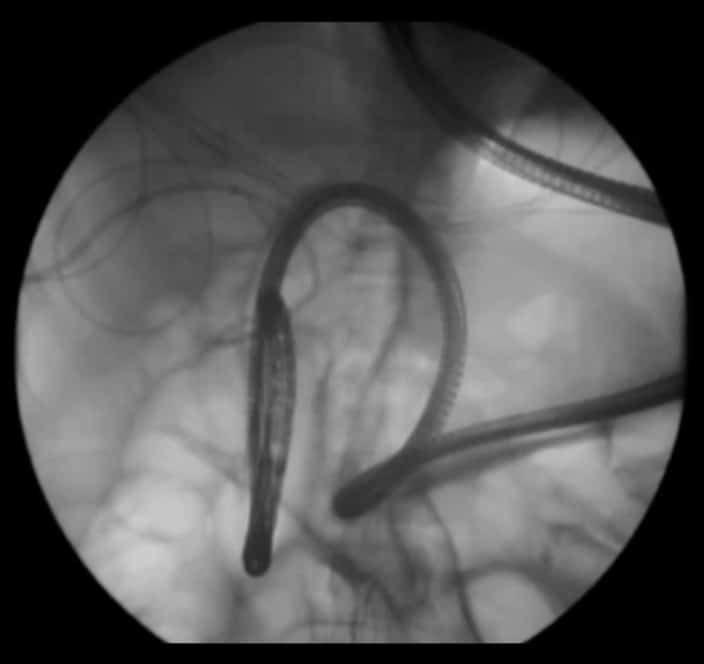THE NEED
LOOPING in
GI Endoscopy
LOOPING CAN MAKE GI PROCEDURES MORE CHALLENGING
What is Looping?
During colonoscopy, enteroscopy and other GI procedures, looping of the endoscope is a common occurrence1 and can create significant challenges. In practice, most endoscopists are unable to complete all of their endoscopies successfully.2-5 As the endoscope navigates the colon, stomach or upper bowel, it pushes against the anatomy. Sometimes, the anatomy does not provide support, instead stretching and distending outward, causing a loop to form in the scope and preventing the tip from advancing.
Several maneuvers are available to shorten the endoscope and reduce the loop. However, looping can recur and is the cause of the majority of difficult procedures,6 causing patient pain, complications, and failed procedures, increasing the overall risk and cost of colonoscopy and other GI procedures.7

Looping makes some procedures challenging, even for experienced endoscopists8
Traditional solutions such as abdominal compression and patient position changes have limited success in solving looping8
GI endoscopy unit nurses and technicians – who frequently must move patients or apply abdominal pressure to manage looping – commonly suffer from upper extremity and lower back injuries9
Looping makes some procedures challenging, even for experienced endoscopists8
Traditional solutions such as abdominal compression and patient position changes have limited success in solving looping8
GI endoscopy unit nurses and technicians – who frequently must move patients or apply abdominal pressure to manage looping – commonly suffer from upper extremity and lower back injuries9
Pathfinder® can help solve your looping problem with our dynamically rigidizing overtube for colonoscopies..
References
- Shah SG, Saunders BP, Brooker JC, Williams CB. Magnetic imaging of colonoscopy: an audit of looping, accuracy and ancillary maneuvers. Gastrointest Endosc, 2000. 52(1):
- Anderson ML, Heigh RI, McCoy GA, et al. Accuracy of assessment of the extent of examination by experienced colonoscopists. Gastrointest Endosc. 1992;38:560–3. [PubMed] [Google Scholar]
- Marshall JB, Barthel JS. The frequency of total colonoscopy and terminal ileal intubation in the 1990s. Gastrointest Endosc. 1993;39:518–20. [PubMed] [Google Scholar]
- Winawer SJ, Fletcher RH, Miller L, et al. Colorectal cancer screening: Clinical guidelines and rationale. Gastroenterology. 1997;112:594–642. [PubMed] [Google Scholar]
- Burtin P, Bour B, Charlois T, et al. Colonic investigations in the elderly: Colonoscopy or barium enema? Aging. 1995;7:190–4.
- Saunders BP, Macrae FA,Williams CB. What makes colonoscopy difficult [abstract]? Gut 1993;34(Suppl):T179.
- Biggers L. International Journal of Safe Patient Handling & Mobility. 2018 8(4)
- Taibibian N, Michaletz PA, Schwartz JT, Heiser MC, Dixon WB, Smith JL, et al. Use of an endoscopically placed clip can avoid diagnostic errors in colonoscopy. Gastrointest Endosc 1988;34:262-4.
- Drysdale S. The incidence of upper extremity injuries in endoscopy nurses working in the United States. Gastroenterol Nurs. 2013;36(5):329-338.
Photo Credits
Fluoro images courtesy: Professor Joo Ha Hwang, MD, PhD, Stanford University Medical Center

